11170 A VERY FINE QUALITY MARQUETRY AND GILT BRASS MOUNTED CENTER OR WRITING TABLE OF UNUSUAL SIX LEG FORM, THE MOUNTS SIGNED ‘BLAKE’ English. Second Quarter Of The Nineteenth Century. Measurements: Width: 56 1/2″ (143.4 cm) Height: 27″ (68.5 cm) Depth 21 1/2″ (54.5 cm).
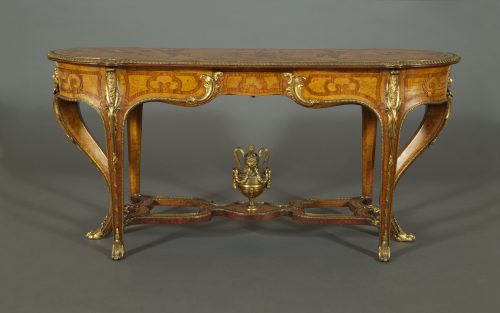
Research
The oval marquetry top with strapwork decoration forming three cartouches, the central cartouche containing a hexagonal basket of flowers and the flanking cartouches each containing small bouquet, all with various types of flowers within a gilt-bronze molded edge. The top set above a shaped frieze decorated with trefoil strapwork and foliate gilt-bronze mounts that continue along the bottom edge of the frieze and down the legs. A red velvet-lined writing slide pulls out from the center, with two conforming, rounded drawers at each end, mounted with gilt-bronze classical mask and foliate drawer pulls. The whole raised on six marquetry inlaid cabriole legs with stylized foliate mounts to the four corner legs, each terminating in a gilt bronze paw foot. The legs joined by double shield-shape stretchers edged with gilt-bronze floral guilloche molding centered by an ovoid panel on which rests a gilt-bronze two handled urn with leonine masks, laurel swags and a pine cone finial.
Marks:
Several gilt metal feet cast with ‘Blake‘ inscription.
This table, inspired by Ancien Régime style furniture, is the work of the renowned London firm of Blake and represents “a fine and innovative manifestation of an English cabinetmaker’s reinterpretation of French furniture at its zenith.”1 Its unusual six-legged design relates to a drawing by renowned French furniture maker André-Charles Boulle in the Musée des Arts Decoratifs (figure 1). The fashion for boulle furniture was promoted in London by Louis le Gaigneur who set up a ‘Buhl factory’ there in 1815. Blake belonged to a small group of English craftsmen working in the Louis XV style, executing ambitious boulle and wood marquetry and ormolu-mounted furnishings; other cabinetmakers specializing in this technique included E. H. Baldock, Thomas Parker, and Town & Emanuel. The mania for the French was in large part driven by King George IV’s Francophile leanings, as attested by the large quantity of French furniture, and English furniture in the French style, that was produced especially for Carlton House and Windsor Palace.
Robert Blake is recorded as a “cabinet inlayer and buhl marnufacturer” working at 8 Stephen Street in London from 1826, premises which his family occupied until 1881.2 His sons, George, Charles, James and Henry also worked for the company and its workshop as it evolved and moved to various locations throughout London. By 1842 they are listed as “George Blake and Bros, cabinet inlayers.”
Few signed pieces by the firm are recorded, but included among that group is are several commodes copied after a pair by Boulle for Louis XIV, an octagonal marquetry table by Robert Blake in the Victoria & Albert Museum, and a piano in the Metropolitan Museum of Art stamped, “Designed and Executed by/George Henry Blake/London.”
Footnotes:
1. Linley Hall, Shropshire: Property from The Collection of The Late Sir Jasper & Lady More. Christie’s London, 9 March 2016. Lot 91.
2. Gilbert, Christopher. Pictorial Dictionary of Marked London Furniture. Leeds: Maney, 1996. 18.
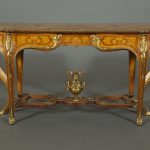

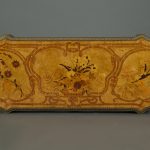

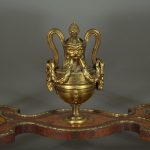
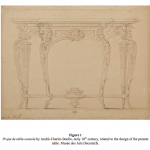
Comments are closed.